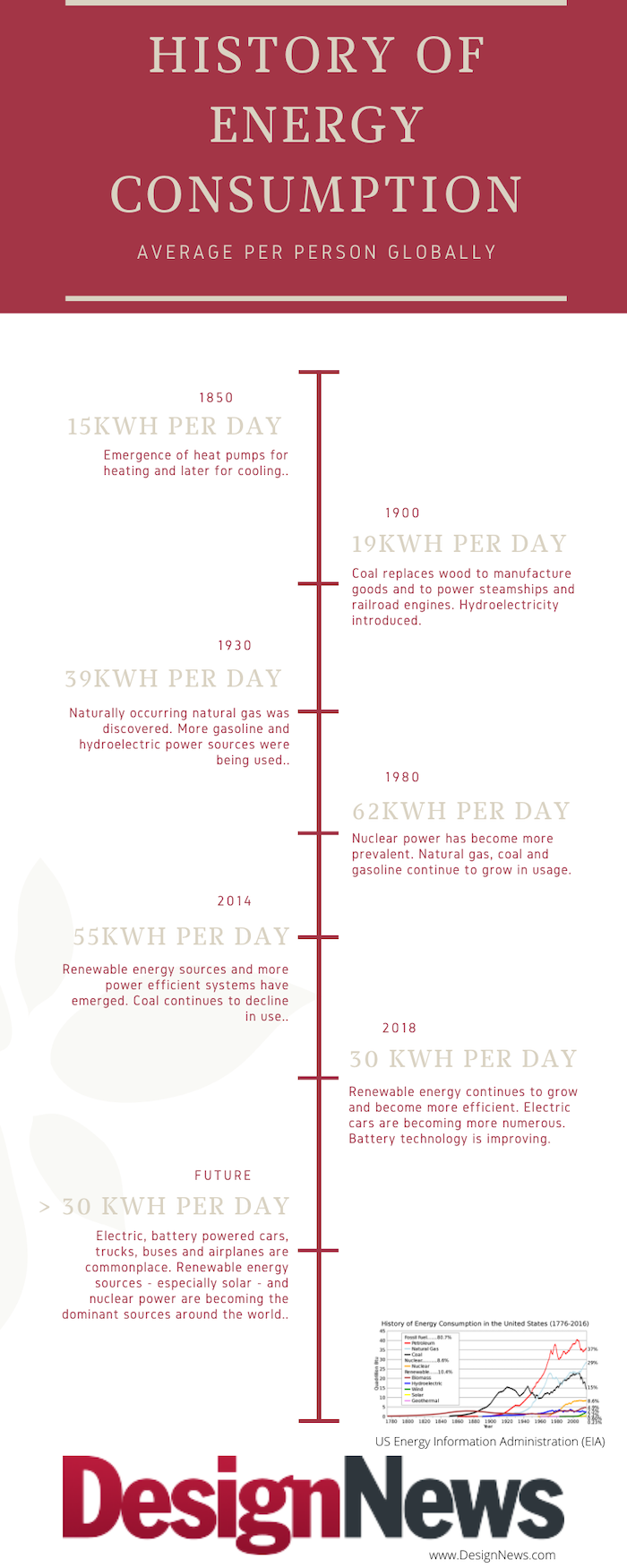Various studies from the US Energy Information Administration (EIA) provide a glimpse into changing individual energy consumption habits from the mid-1850s to the present.
Did you ever wonder how much electrical energy people consumed in the past? Ongoing surveys by the EIA provide answers to those questions while comparing them to country, population size, energy source, and more. For example, the average annual electricity consumption for a US residential utility customer in 2018 was 10,972 kilowatthours (kWh) per year for an average of about 914 kWh per month or about 30 kwh per day (see below). If the numbers seem confusing, just remember that a kilowatthour is equivalent to a power consumption of 1,000 watts for 1 hour.
On average, the typical American uses 41% of their electric energy on space heating, and 35% on appliances, electronics, and lighting.
In the chart, equivalent energy consumption before electrical power was easily available (e.g., 1850 through 1930) have been converted from wood, coal, and gas sources using the standard conversion, 1 BTU = 0.000293071 KWH.
According to the EIA, the three major fossil fuels – petroleum, natural gas, and coal, which together provided an average of 87% of total US primary energy use over the past decade (2000 to 2010) – have dominated the US fuel mix for well over 100 years. The agency predicts that the continuation of current laws, regulations, and policies will result in a continued heavy reliance on the three major fossil fuels through at least 2035. Still, the total fossil fuel share of energy consumption has been decreasing as renewable energy and nuclear electric power experience modest growth, and non-hydroelectric renewable energy is predicted to more than double between 2009 and 2035.
Take a look at the rest of the survey results in the infographic below:
